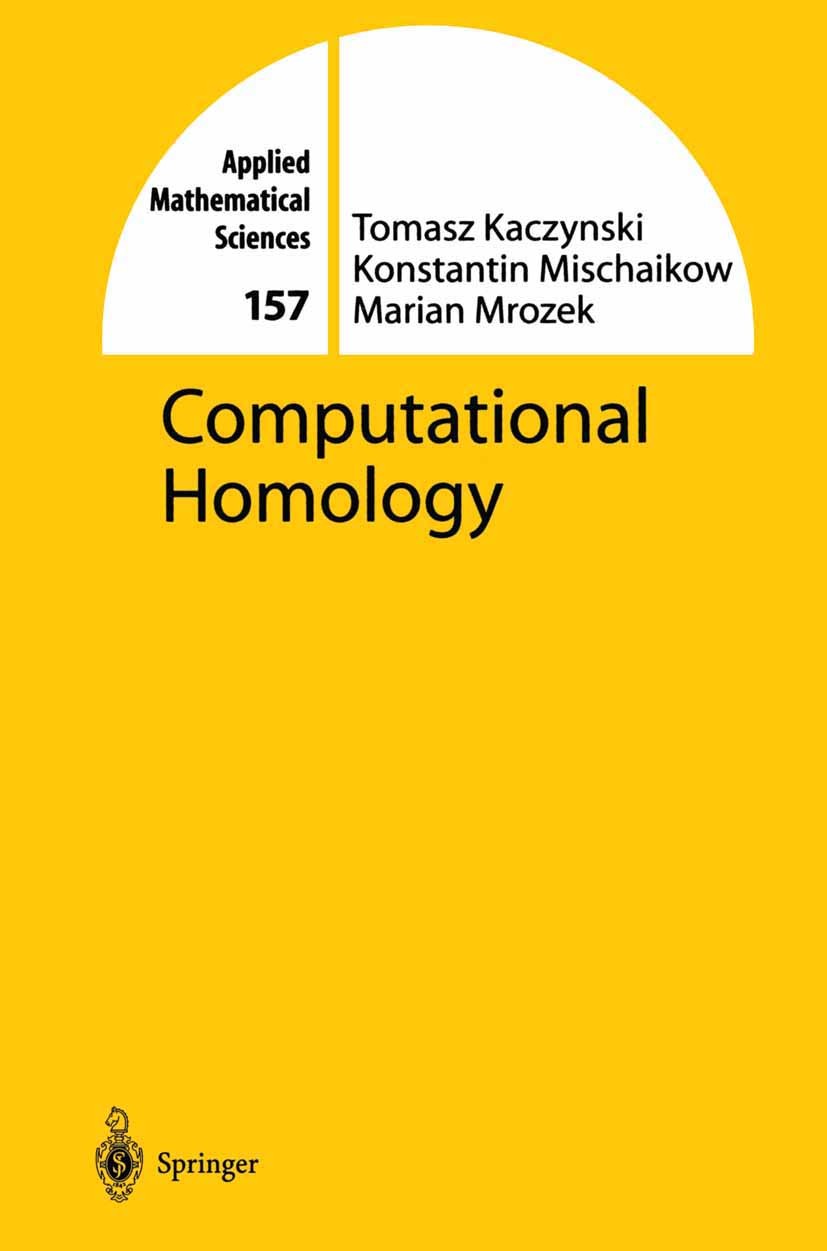| 書(shū)目名稱(chēng) | Computational Homology |
| 編輯 | Tomasz Kaczynski,Konstantin Mischaikow,Marian Mroz |
| 視頻video | http://file.papertrans.cn/233/232346/232346.mp4 |
| 概述 | This book by three experts takes a novel combinatorial computational approach to the subject of homology.It is the first book of its kind to appear.Includes supplementary material: |
| 叢書(shū)名稱(chēng) | Applied Mathematical Sciences |
| 圖書(shū)封面 |  |
| 描述 | .Homology is a powerful tool used by mathematicians to study the properties of spaces and maps that are insensitive to small perturbations. This book uses a computer to develop a combinatorial computational approach to the subject.?The core of the book deals with homology theory and its computation. Following this is a section containing extensions to further developments in algebraic topology, applications to?computational dynamics, and applications to image processing. Included are exercises and software that can be used to compute homology groups and maps. The book will appeal to researchers and graduate students in mathematics, computer science, engineering, and nonlinear dynamics.. |
| 出版日期 | Textbook 2004 |
| 關(guān)鍵詞 | Algebraic topology; Homotopy; Lefschetz fixed-point theorem; algorithms; fixed-point theorem; homological |
| 版次 | 1 |
| doi | https://doi.org/10.1007/b97315 |
| isbn_softcover | 978-1-4419-2354-7 |
| isbn_ebook | 978-0-387-21597-6Series ISSN 0066-5452 Series E-ISSN 2196-968X |
| issn_series | 0066-5452 |
| copyright | Springer Science+Business Media New York 2004 |
 |Archiver|手機(jī)版|小黑屋|
派博傳思國(guó)際
( 京公網(wǎng)安備110108008328)
GMT+8, 2025-10-16 02:45
|Archiver|手機(jī)版|小黑屋|
派博傳思國(guó)際
( 京公網(wǎng)安備110108008328)
GMT+8, 2025-10-16 02:45


